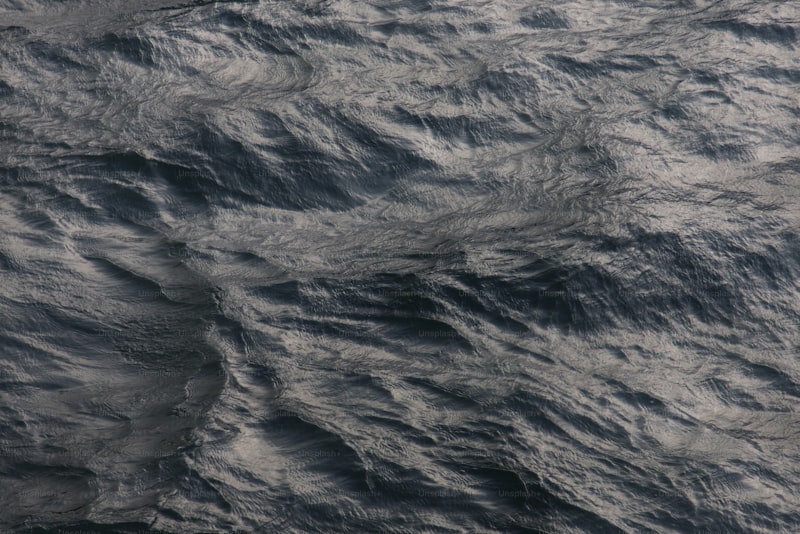Take, for example, the majestic humpback whales. Each year, these giants of the deep undertake one of the longest migrations of any mammal, traveling from their feeding grounds in cold polar waters to warmer tropical seas where they breed and give birth. This journey can cover up to 16,000 miles round trip, showcasing their remarkable navigation skills and resilience.
But it’s not just whales that embark on such incredible journeys. Sea turtles, too, traverse vast distances across oceans, returning to the beaches where they were born to lay their eggs. This cycle of migration is crucial for their species’ survival, ensuring genetic diversity and the continuation of their populations.
The key to understanding these migration patterns lies in a complex interplay of environmental cues, magnetic fields, and biological rhythms. Marine biologists study these factors meticulously, using satellite tracking, acoustic tags, and even citizen science initiatives to map out the routes taken by different species.
Migration is not without its perils. Marine animals face numerous threats along their journey, from predators and human activities to changing ocean conditions due to climate change. Conservation efforts are thus vital to protect these migratory routes and the species that rely on them.
In essence, marine migration patterns are a testament to the resilience and adaptability of oceanic life. They remind us of the interconnectedness of ecosystems across the globe and the need for sustainable practices to ensure these magnificent journeys continue for generations to come.
Unlocking Mysteries of the Deep: How Scientists Track Marine Migration
Have you ever wondered how scientists uncover the secrets of marine creatures as they navigate the vast ocean? Tracking marine migration is no easy feat—it’s a blend of cutting-edge technology and deep-sea expertise. Imagine the ocean as a colossal puzzle, each species a unique piece that migrates across thousands of miles. Understanding these patterns is crucial for conservation and ecosystem management.
Tracking devices play a pivotal role in this quest for knowledge. Miniaturized tags, akin to tiny passports, are attached to marine animals such as whales, turtles, and even small fish. These tags record intricate details of their journeys: from temperature changes to depth variations and even the duration spent at different locations. It’s like having a digital footprint of their underwater adventures.
But how do these tags communicate? Many use satellite technology, sending data to researchers in real-time. This allows scientists to monitor migrations across oceans, providing invaluable insights into breeding behaviors, feeding grounds, and migration routes. It’s akin to a global tracking network, where each tagged animal contributes to a broader understanding of oceanic movements.
The data gathered isn’t just numbers—it tells stories of endurance and survival. For instance, some sea turtles embark on transoceanic journeys, swimming thousands of miles to nest on specific beaches. This determination mirrors a marathon runner’s perseverance, navigating currents like obstacles and pausing at “pit stops” along their journey.
Moreover, understanding marine migration isn’t solely about tracking animals; it’s about unraveling the interconnectedness of ocean life. For instance, by studying the movements of predators like sharks, scientists can assess the health of prey populations such as seals or fish. It’s a delicate balance, where every species plays a crucial role in maintaining ecosystem stability.
In essence, tracking marine migration isn’t just about following animals; it’s about preserving their habitats and ensuring their survival. It’s a collaborative effort between technology, scientific inquiry, and a deep respect for the mysteries of the deep. As we unlock these secrets, we gain a profound appreciation for the resilience and beauty of marine life—a treasure trove waiting to be discovered beneath the waves.
From Poles to Tropics: The Incredible Journeys of Marine Migrants
Imagine the humpback whale, a majestic giant of the seas, traveling thousands of miles from the chilly waters of the Arctic to the warm breeding grounds near the equator. This journey is not just a migration; it’s a testament to resilience and adaptation in the face of changing seasons and environments.
Similarly, sea turtles, ancient mariners of the oceans, navigate across oceans with astonishing precision. From the nesting beaches where they were born, they traverse oceans, guided by Earth’s magnetic fields and celestial cues, to return decades later to lay their eggs on the same beaches they once departed from.
The journey of these marine migrants is a blend of wonder and peril. They brave predators, human impacts like climate change and pollution, and the unpredictable forces of nature. Yet, they persist, driven by an innate urge to perpetuate their species and maintain the delicate balance of marine ecosystems.
These migrations are not just biological marvels but also crucial for maintaining the health of our oceans. As these creatures travel, they transport nutrients, disperse species, and contribute to the biodiversity that sustains life underwater. They remind us of the interconnectedness of marine life across the globe, highlighting the importance of conservation efforts to protect their habitats and migration routes.
The journeys of marine migrants from poles to tropics are awe-inspiring tales of survival and adaptation in a world of constant change. They teach us about the resilience of nature and the interconnectedness of ecosystems that span the vast expanse of our oceans.
Navigating the Blue Highways: Mapping Marine Migration Routes
Have you ever wondered about the hidden highways beneath the ocean’s surface? Marine migration routes, often referred to as “blue highways,” are vital pathways that many sea creatures follow annually. These routes span vast distances and connect different parts of the world’s oceans, facilitating the movement of various species from one habitat to another.
Imagine these routes as underwater superhighways bustling with life, where whales, sharks, turtles, and even smaller fish travel seasonally in search of food, mates, or suitable breeding grounds. Each species has its own unique journey mapped out by centuries of instinct and adaptation to oceanic currents and environmental cues.
For instance, the majestic humpback whales embark on one of the longest migrations of any mammal, traveling thousands of miles from their feeding grounds in colder waters to warmer tropical waters where they give birth and rear their young. Their journey is not just a physical migration but also a cultural phenomenon ingrained in their species, passed down through generations.

Similarly, sea turtles embark on incredible odysseys, returning faithfully to the beaches where they hatched decades earlier to lay their eggs. These ancient mariners navigate with remarkable precision, guided by the Earth’s magnetic field and possibly even celestial cues.
The mapping of these migration routes is a testament to both the wonder of nature and the advancements in marine science. Scientists use various technologies, including satellite tracking and acoustic tagging, to monitor and map these movements. This knowledge helps in understanding species conservation, predicting impacts of climate change, and managing human activities that may disrupt these vital pathways.
Secrets of Survival: Adaptations Seen in Marine Migration Patterns
One of the most fascinating adaptations is seen in the migration patterns of marine species. From majestic whales to agile sea turtles, each creature has its unique way of traversing oceans. Take, for instance, the humpback whale’s annual journey spanning thousands of miles. These giants of the sea rely on their keen senses and internal compass to navigate from polar feeding grounds to warmer breeding waters, showcasing a remarkable ability to adapt to changing seasons.
Similarly, sea turtles undertake epic migrations, guided by Earth’s magnetic fields. Hatchlings emerge from sandy nests and instinctively head towards the sea, imprinting the beach’s magnetic signature to find their way back years later for nesting. This innate navigational skill ensures their survival across vast ocean expanses, where finding food and avoiding predators are constant challenges.
Another marvel is the diel vertical migration of marine organisms like zooplankton and fish. These creatures undertake daily journeys, moving up towards surface waters at night to feed on phytoplankton and descending to darker depths during the day to evade predators. This vertical movement not only aids in survival but also plays a crucial role in nutrient cycling, influencing oceanic ecosystems on a global scale.
Moreover, deep-sea creatures exhibit adaptations to survive extreme pressures and darkness. Bioluminescent organisms create their own light, attracting prey or mates in the abyssal depths where sunlight never reaches. Others have evolved unique sensory organs to detect faint vibrations or chemical signals, essential for communication and locating food sources in pitch-black surroundings.
Climate Change Impact: Altered Routes in Marine Migration
As temperatures rise globally, marine species are adapting by moving to cooler waters. This phenomenon, known as altered routes in marine migration, is becoming increasingly common. Species that once followed predictable paths are now venturing into new territories in search of suitable conditions for survival. It’s like discovering a new shortcut to a familiar destination, except in this case, it’s a matter of life and death.
Take, for instance, the majestic humpback whales. These giants of the sea are renowned for their annual migrations between breeding and feeding grounds. However, rising ocean temperatures are causing their prey to move, forcing humpbacks to adjust their routes. Instead of swimming along traditional pathways, they’re exploring different routes in search of abundant krill and small fish that sustain their massive bodies.
Similarly, sea turtles, known for their epic journeys across oceans, are facing altered migration routes due to changing ocean currents and temperatures. These ancient travelers rely on environmental cues to navigate thousands of miles between nesting and feeding grounds. With climate change disrupting these cues, sea turtles are having to rethink their travel plans, sometimes leading them into unfamiliar—and often perilous—waters.
The implications of altered marine migration routes are profound. It’s not just about the animals; it’s about the entire ecosystem they support. When species move, they disrupt food chains and habitats, affecting everything from fisheries to coastal communities that depend on marine resources for livelihoods.
Technology at Sea: Innovations in Tracking Marine Migration
One of the most groundbreaking innovations is satellite tracking. Through satellites orbiting high above Earth, scientists can monitor the migration patterns of marine species with unprecedented accuracy. These satellites pick up signals from tagged animals, whether they are whales traversing across oceans or sea turtles navigating to nesting grounds. This real-time data provides invaluable insights into their behavior and habitats.
Moreover, advances in acoustic telemetry have furthered our understanding of marine migration. Tiny acoustic tags are attached to animals, emitting unique signals detected by underwater receivers. This method enables researchers to track individual creatures over long distances and through challenging oceanic environments. It’s akin to giving each animal a voice that echoes across the seas, allowing scientists to listen in on their movements and interactions.
In the realm of data analytics, machine learning algorithms are being deployed to sift through vast amounts of tracking data. These algorithms can identify patterns in migration routes, predict future movements, and even detect anomalies in behavior. It’s like teaching a computer to think like a marine biologist, extracting meaningful patterns from a sea of information.
As technology continues to evolve, so too does our ability to safeguard marine ecosystems. By understanding where and when animals migrate, we can better protect their habitats from human impacts such as pollution and overfishing. It’s a delicate dance of innovation and conservation, where each technological leap brings us closer to a harmonious coexistence with marine life.
The Dance of the Tides: How Currents Influence Marine Migration
Ever wondered how marine creatures navigate vast oceans with such precision? It’s not just about swimming skills; it’s about mastering the art of riding the ocean currents. These invisible highways, flowing beneath the surface, play a crucial role in the migratory patterns of marine life.

Ocean currents are like nature’s highways, guiding animals across thousands of miles with minimal effort. Imagine it as a giant conveyor belt stretching across the globe, transporting everything from tiny plankton to massive whales. For creatures like sea turtles, who travel incredible distances during their migrations, these currents provide a navigational aid that’s hard to beat.
But how do these currents actually work? Picture yourself in a fast-moving river. If you jump in, you’re carried along by the water’s flow. Marine animals use currents in much the same way, utilizing them to conserve energy and reach their destinations efficiently. It’s like catching a ride on a moving sidewalk at the airport—it gets you where you need to go without expending unnecessary energy.
Interestingly, not all currents are the same. Some are warm, others cold; some move swiftly, while others meander lazily. These variations create diverse habitats and feeding grounds, influencing where different species choose to travel and settle. For instance, nutrient-rich cold currents often attract large schools of fish, which in turn draw predators like sharks and dolphins.
The dance of the tides is not just a random movement of water—it’s a finely tuned orchestra that dictates the ebb and flow of marine life. By understanding these currents, scientists can better predict how ecosystems might respond to environmental changes, ensuring the delicate balance of our oceans remains intact.
Frequently Asked Questions
How do scientists track marine migration patterns?
Discover how scientists track marine migration patterns through advanced technologies like satellite tagging, acoustic telemetry, and biologging. These methods provide crucial data for understanding movement, behavior, and conservation of marine species.
How do marine species navigate during migration?
Learn how marine species navigate during migration, exploring their use of environmental cues like magnetic fields, ocean currents, and celestial navigation. Discover the fascinating mechanisms behind their long-distance journeys and adaptation strategies.
What are some examples of long-distance marine migrations?
Explore examples of long-distance marine migrations, including the Pacific salmon’s journey from freshwater rivers to the ocean and back, the annual migration of humpback whales between feeding and breeding grounds, and the transoceanic travels of sea turtles to nesting beaches thousands of miles away.
Why do marine animals migrate?
Discover why marine animals migrate, exploring the reasons such as food availability, reproduction needs, and temperature changes. Migration helps them survive and thrive in different environments.
What factors influence marine migration routes?
Learn about the key factors that determine marine migration routes, including ocean currents, water temperature, prey availability, and seasonal changes. Understand how these factors impact the journey of marine species across oceans.


